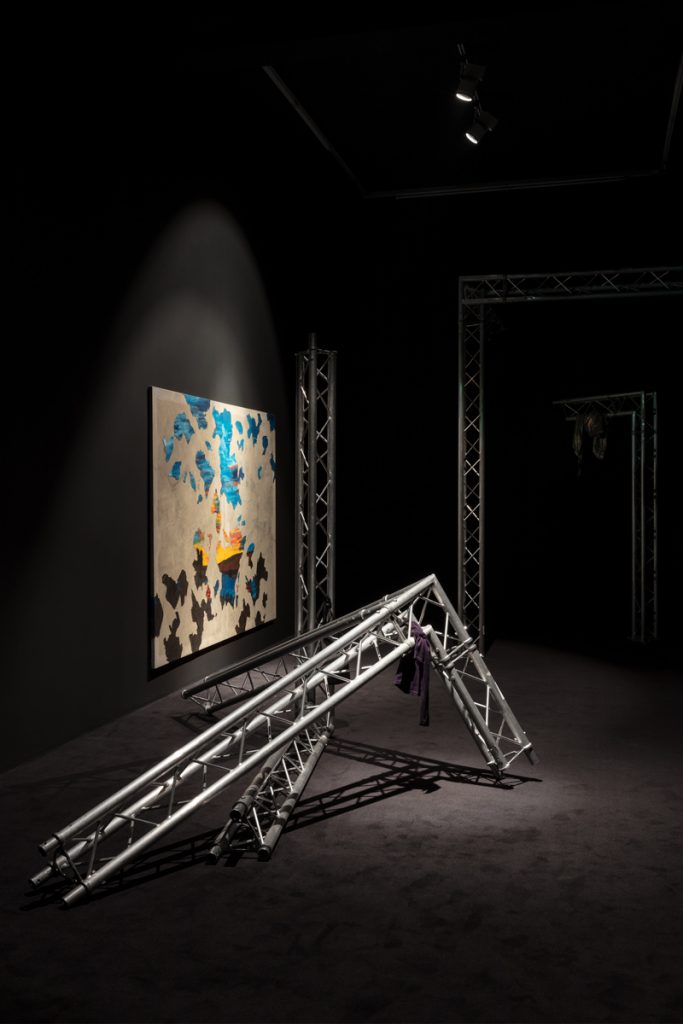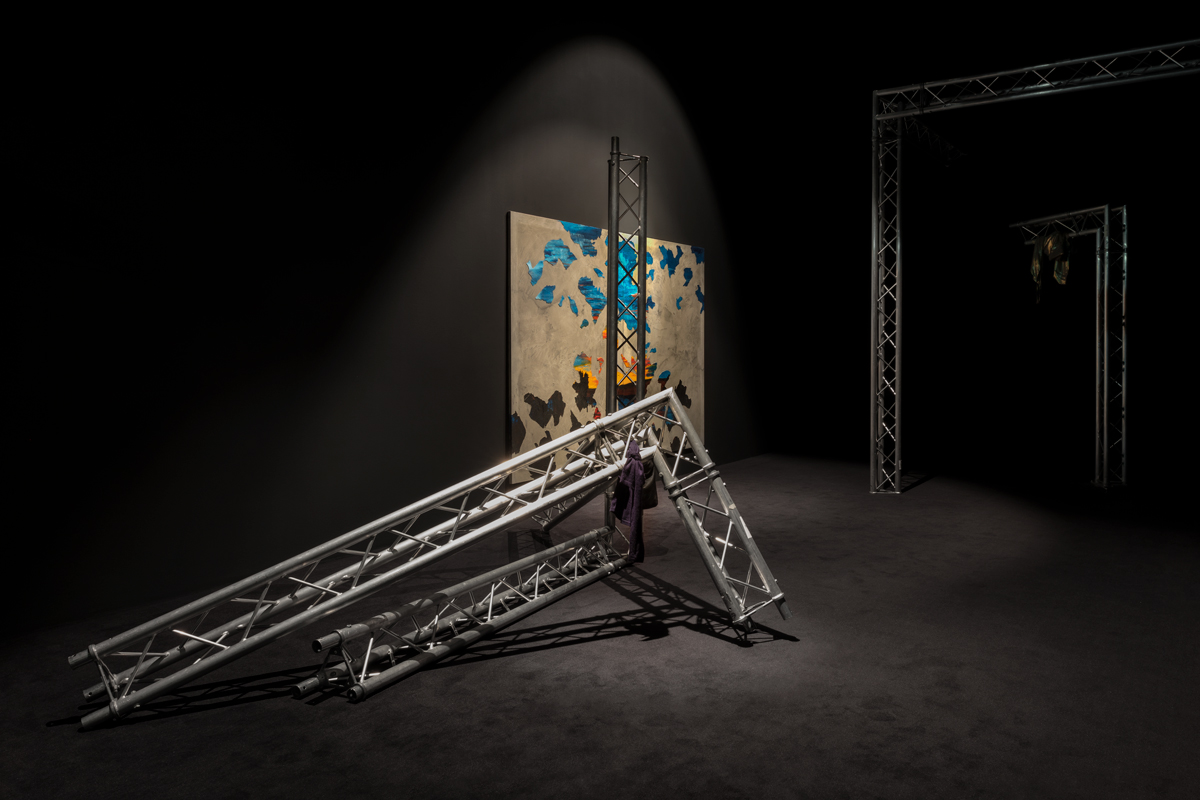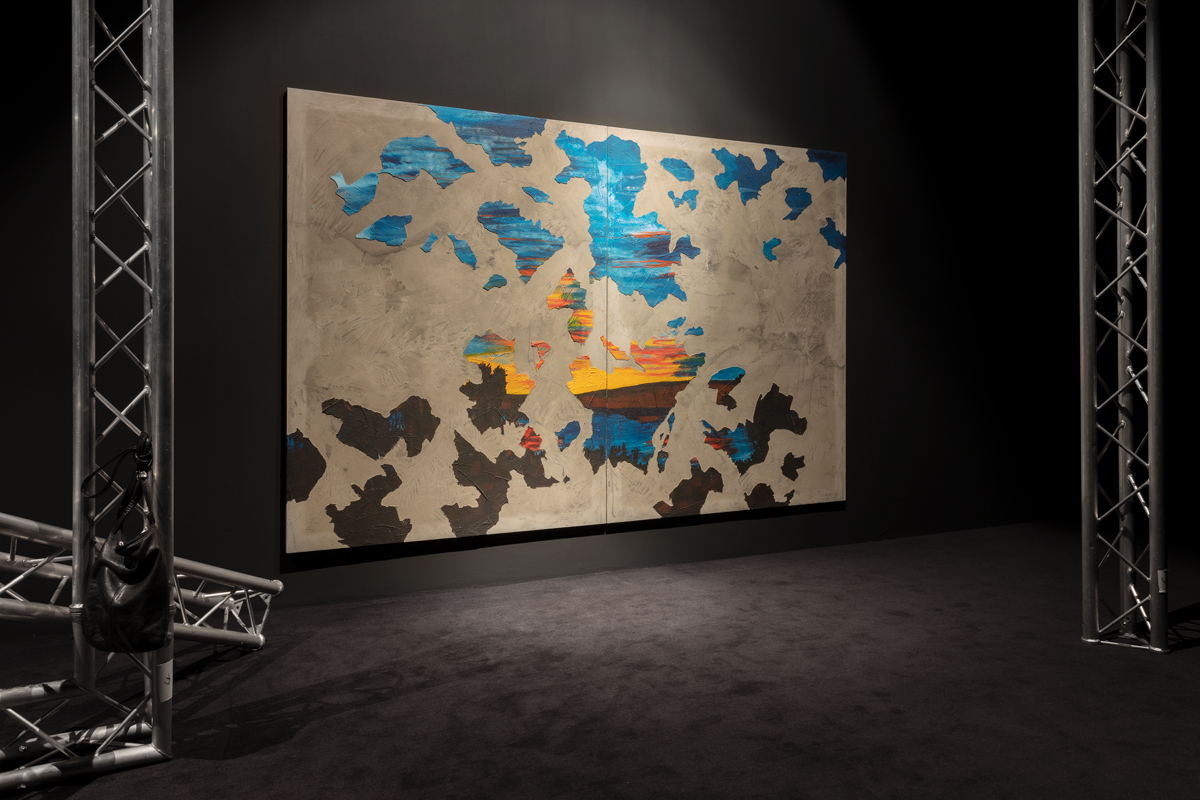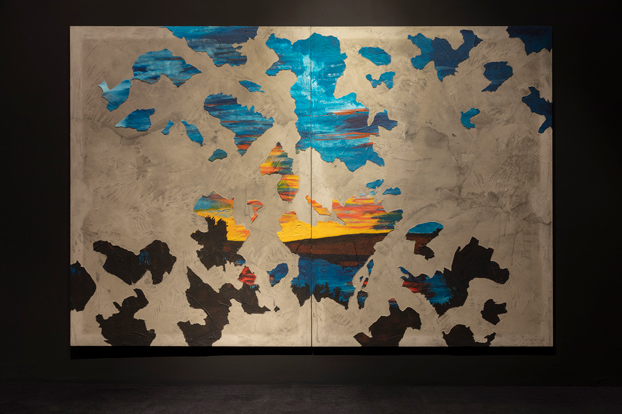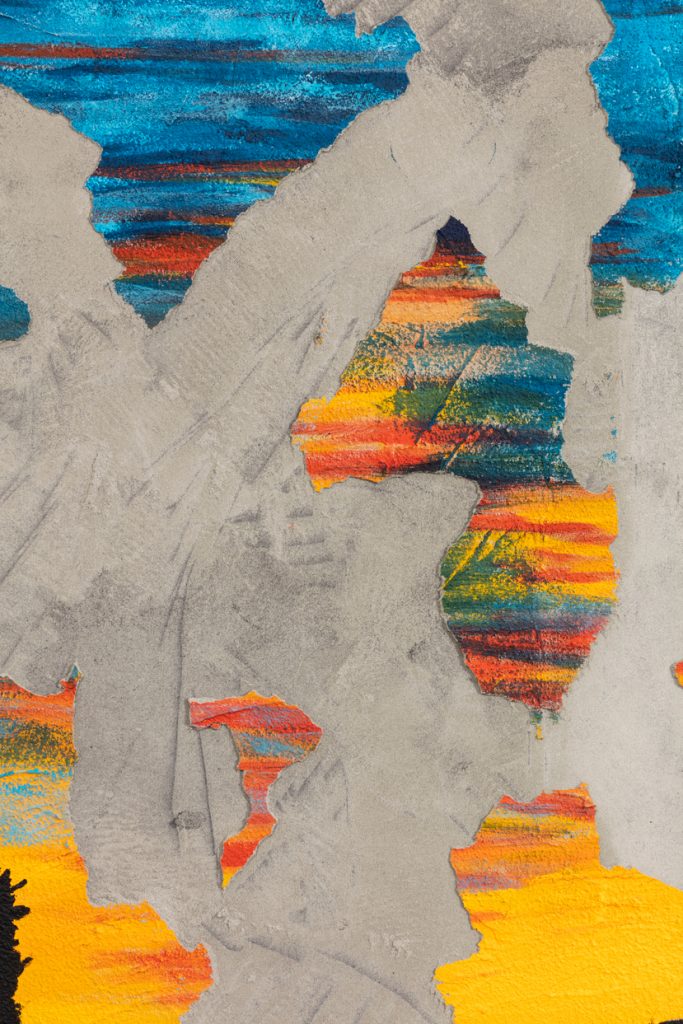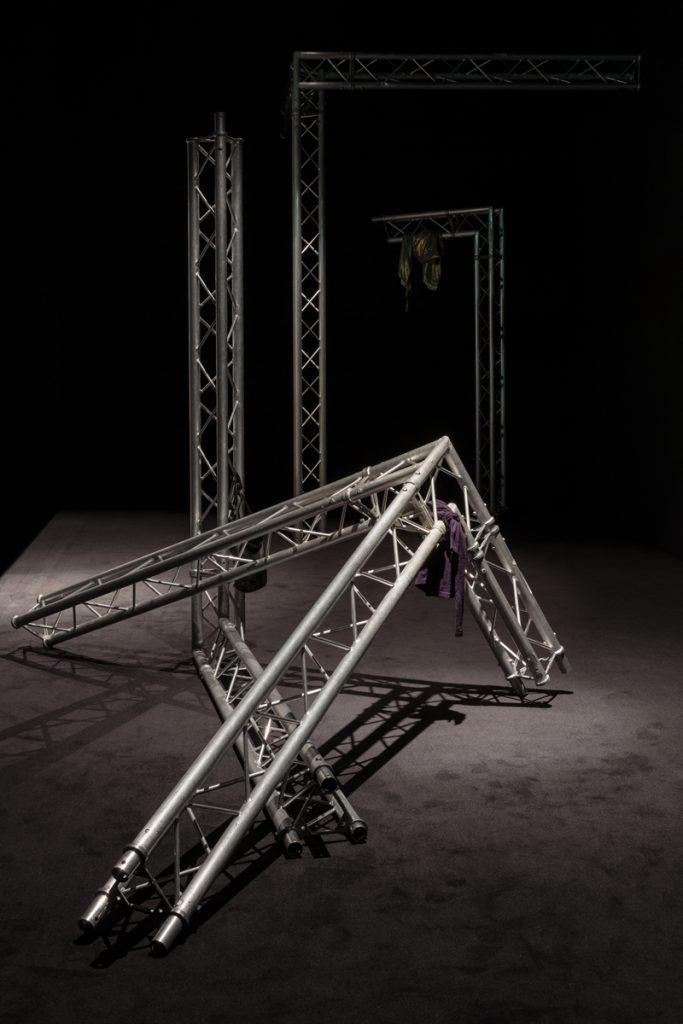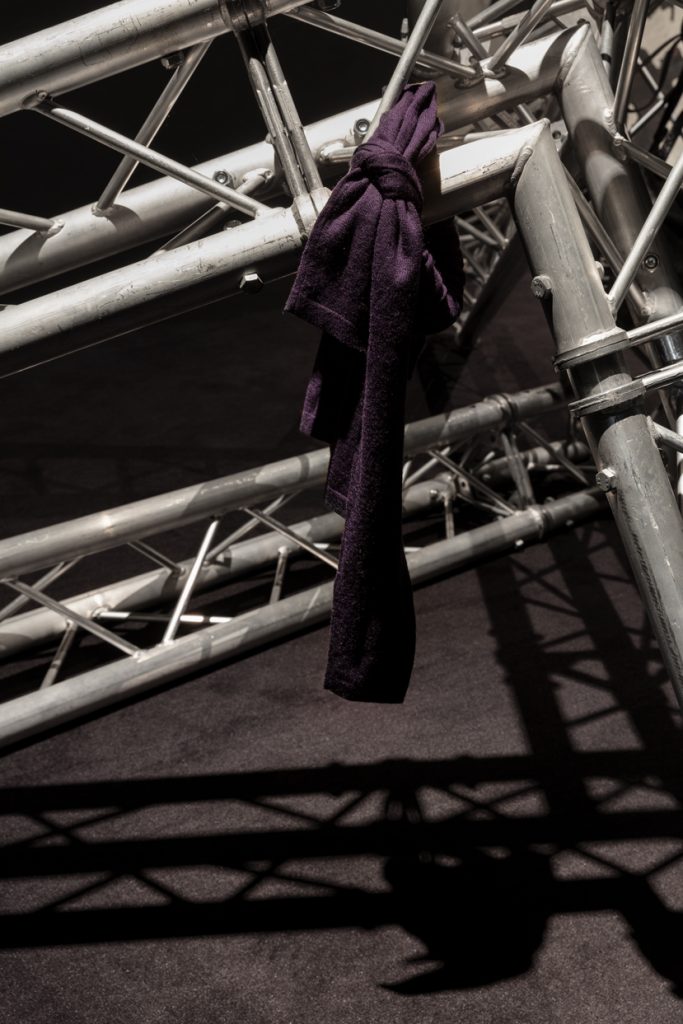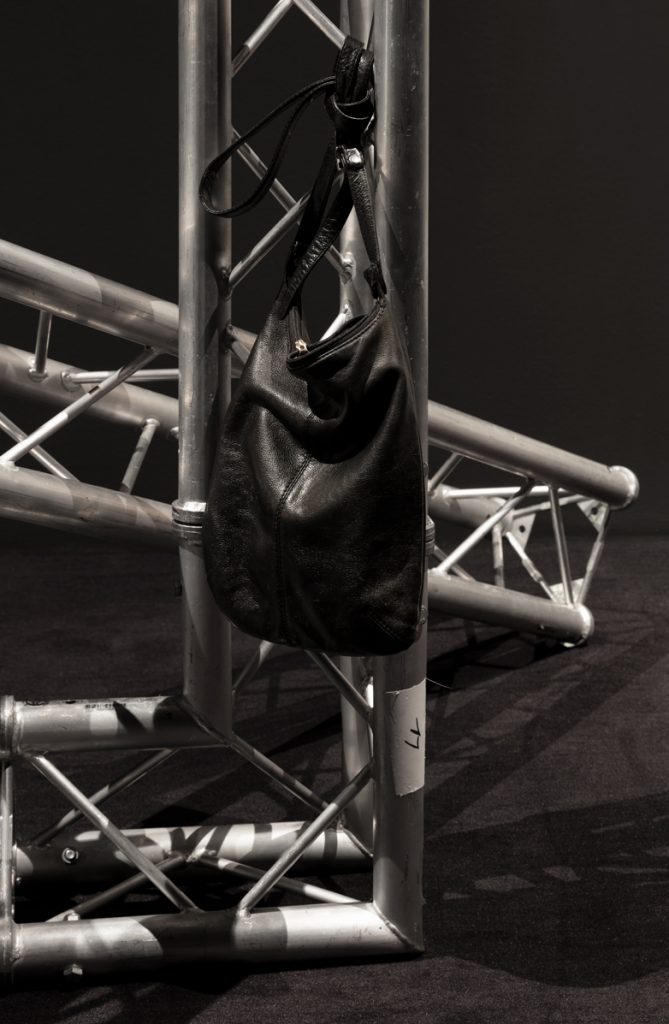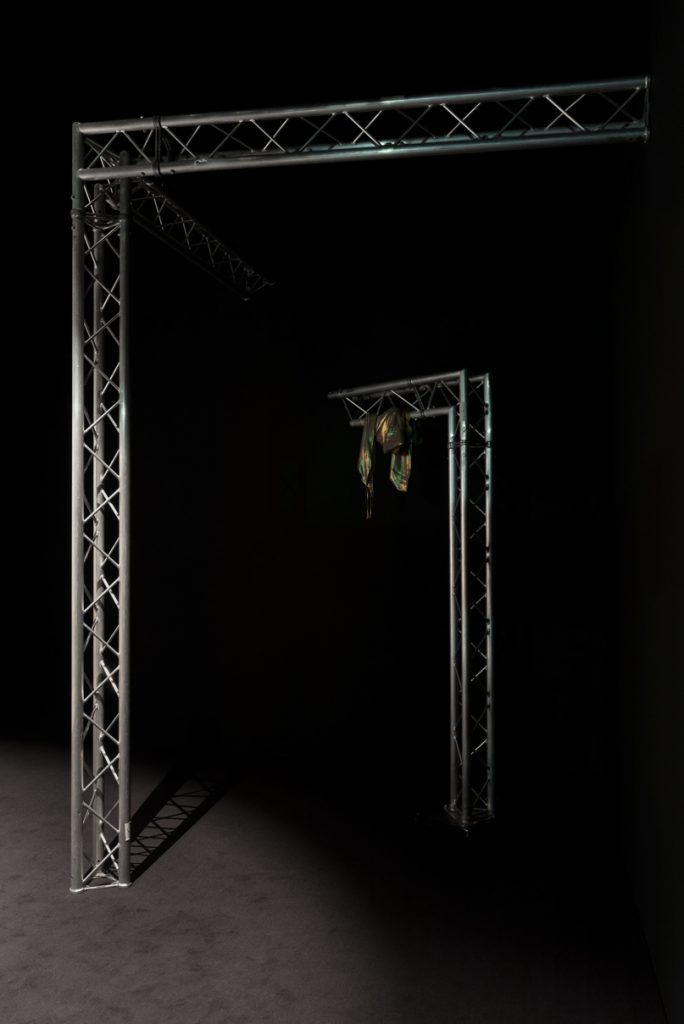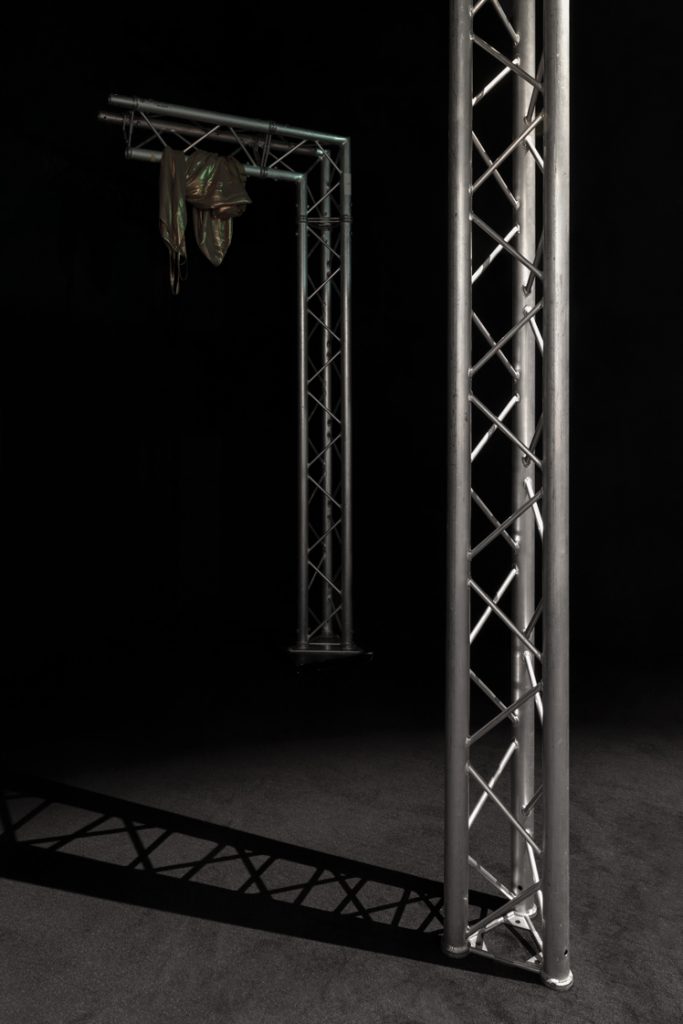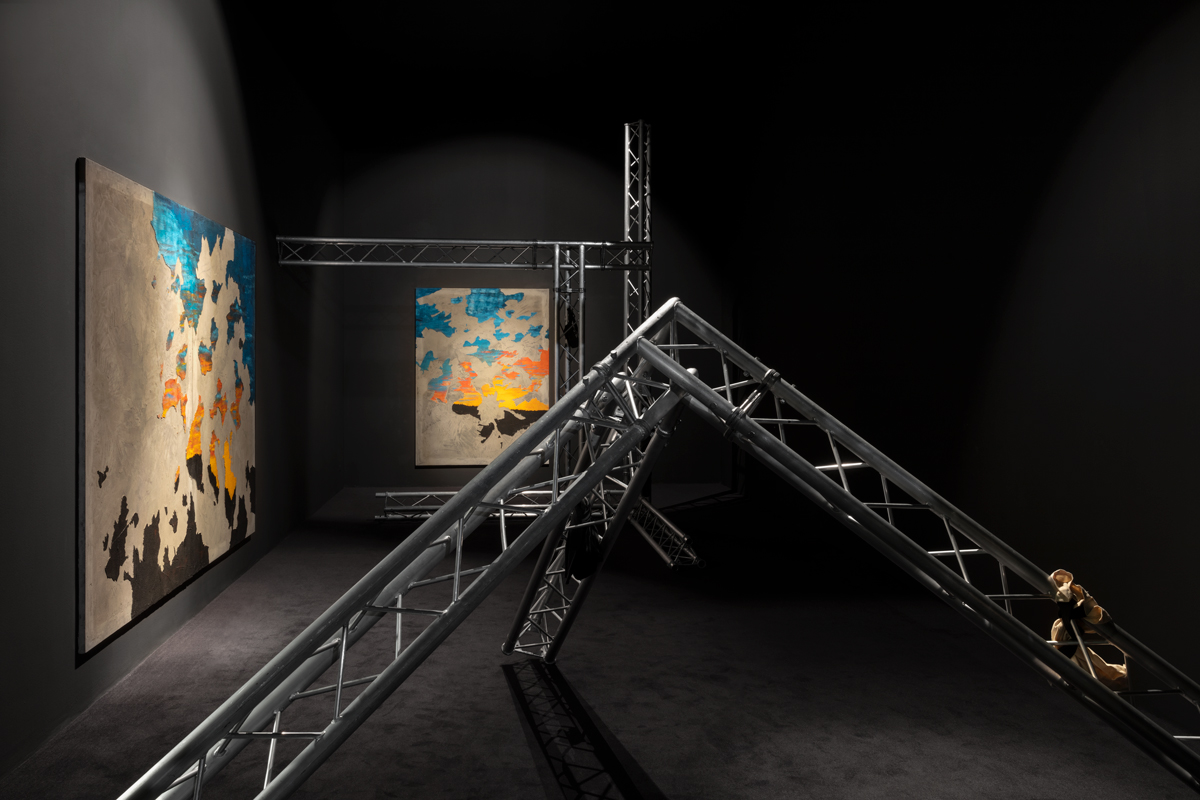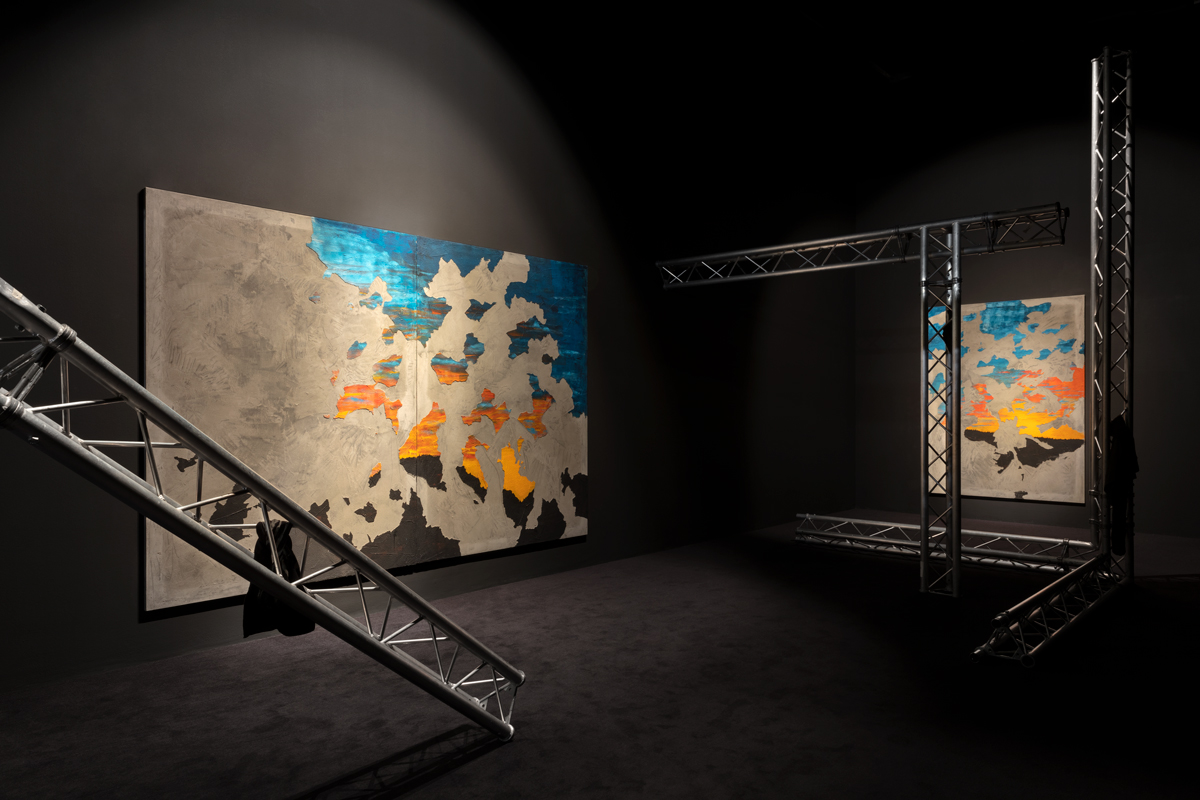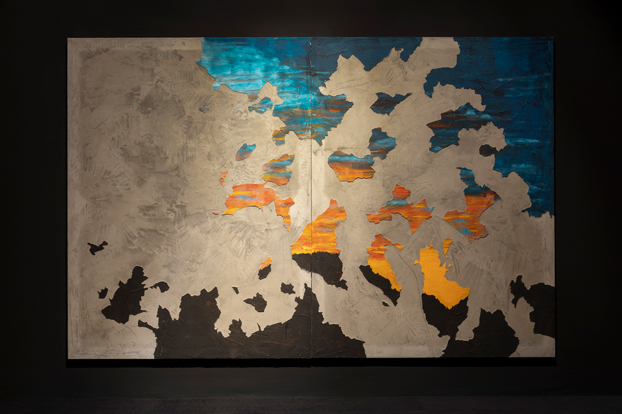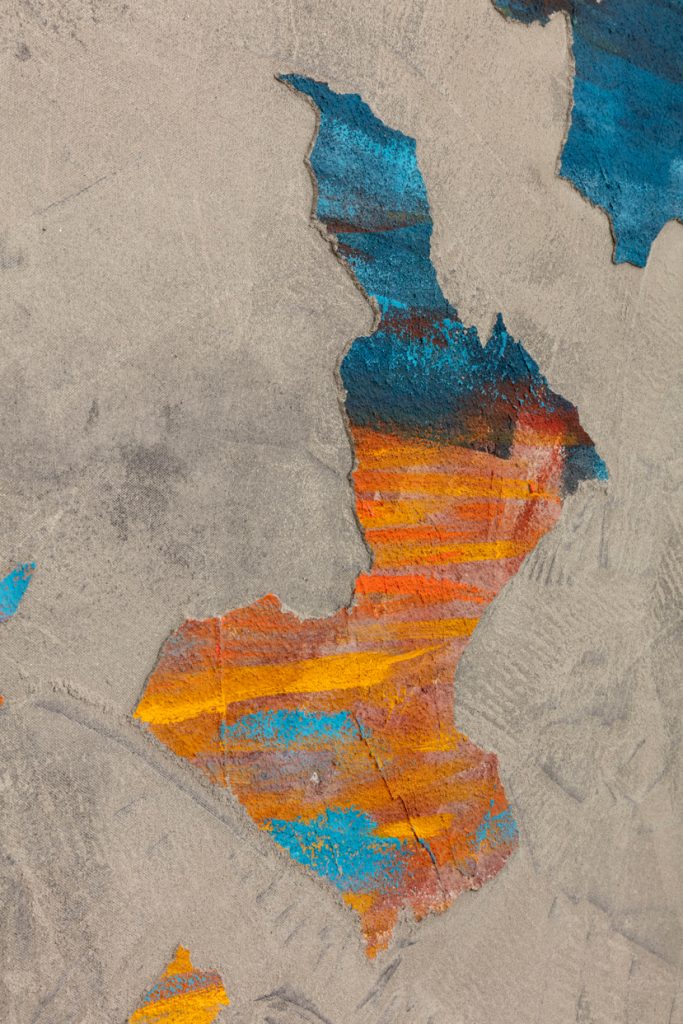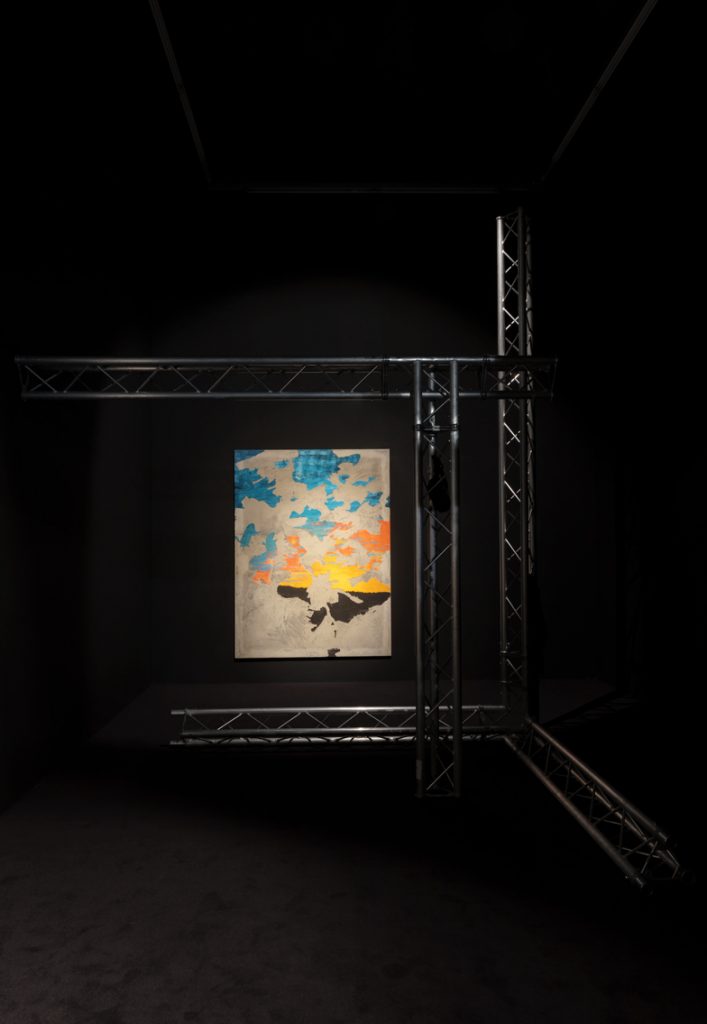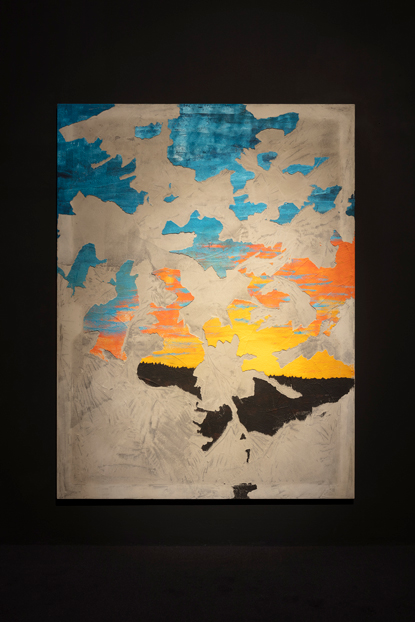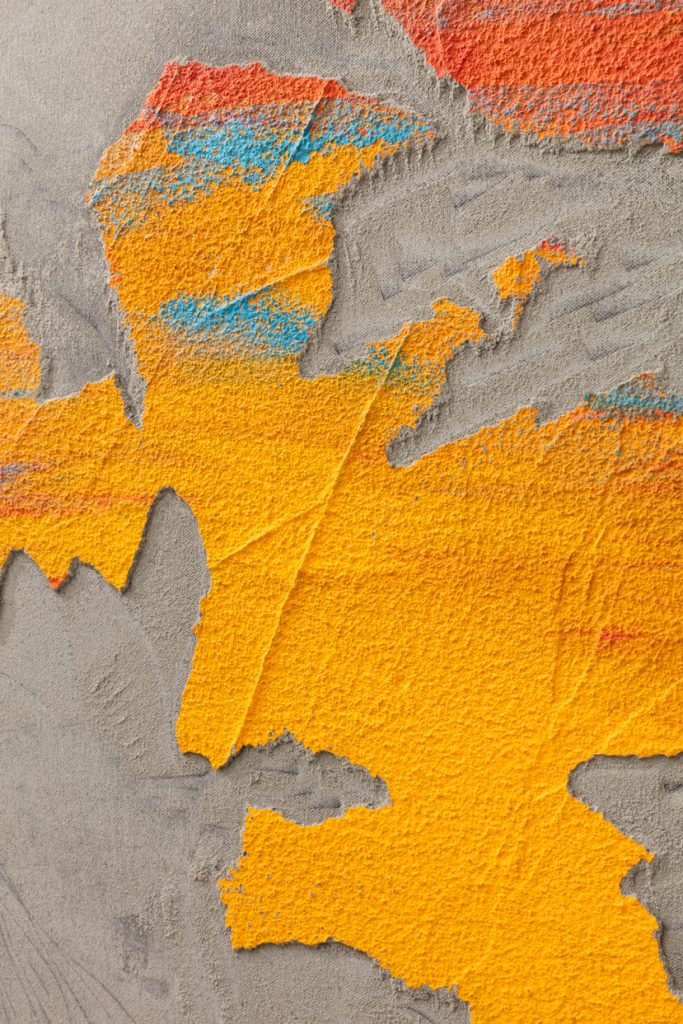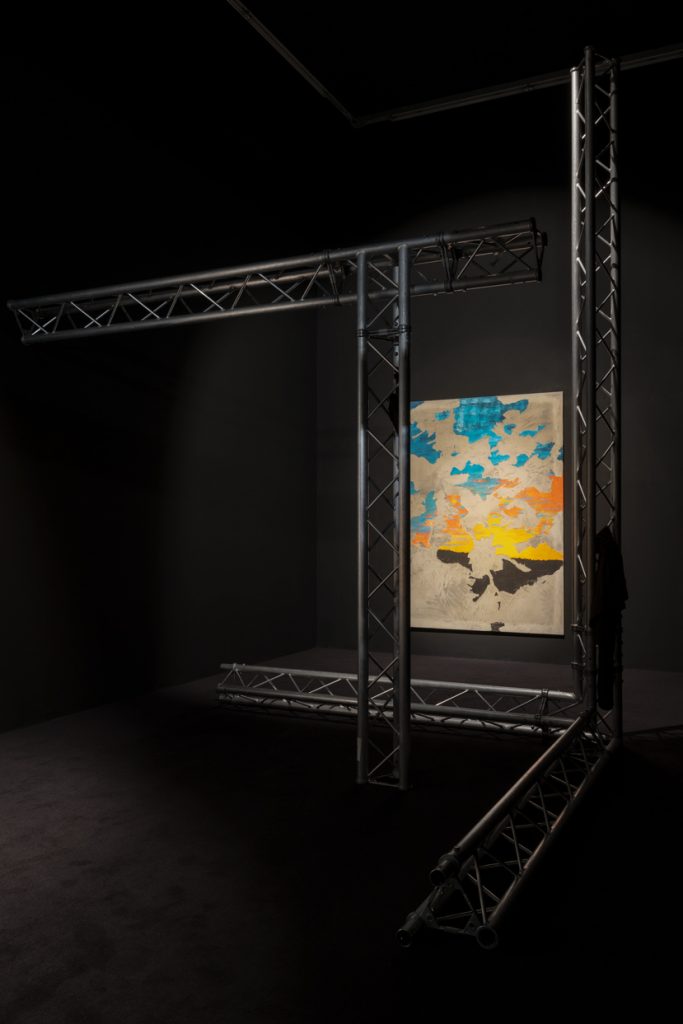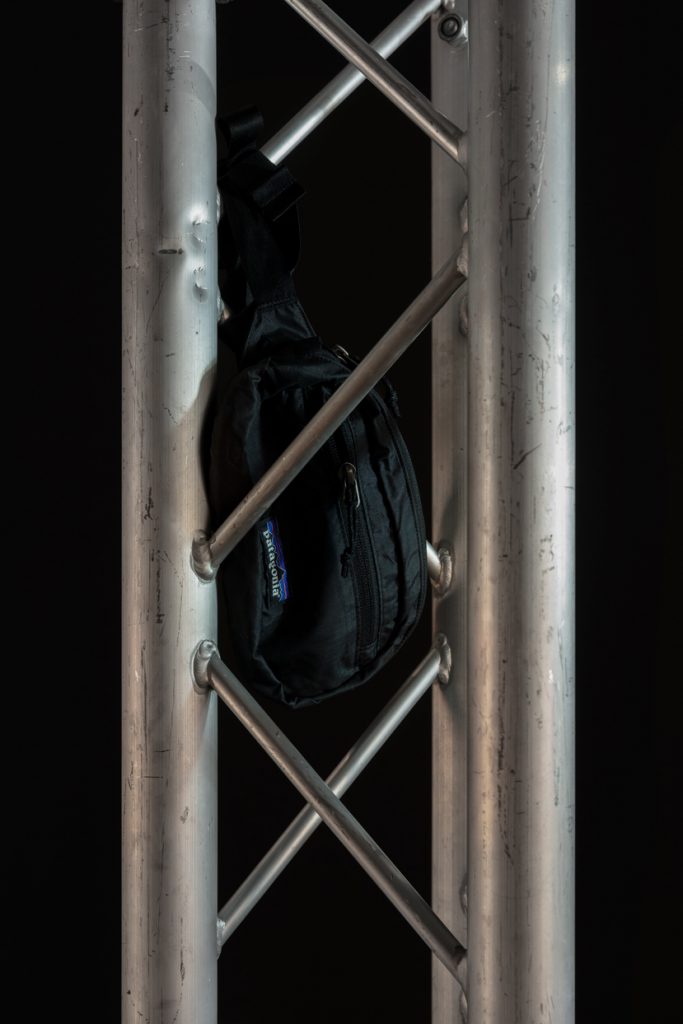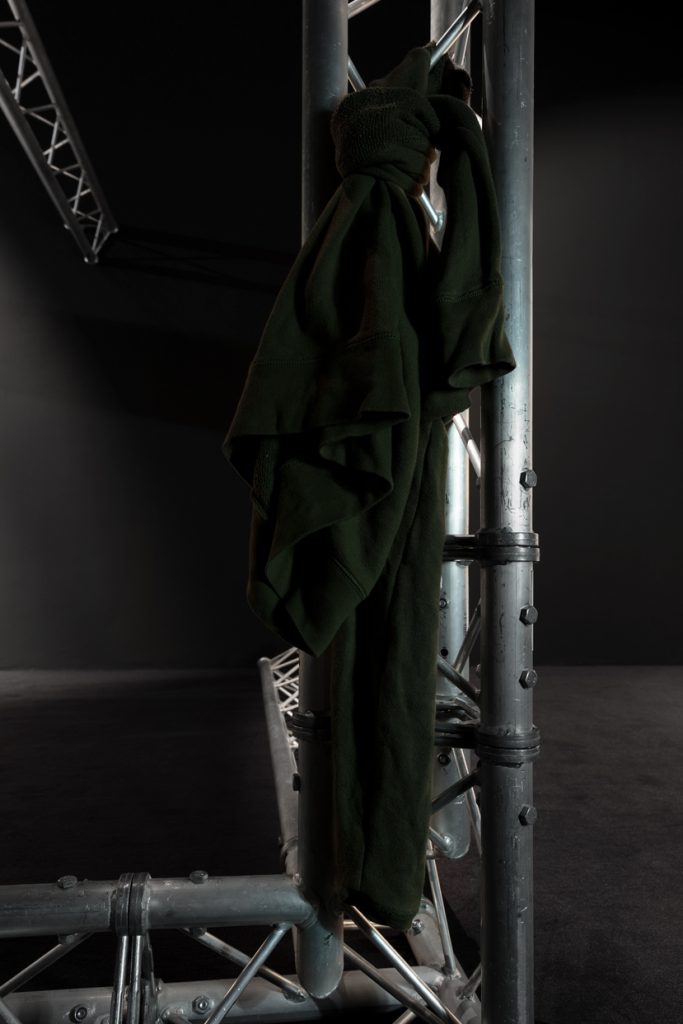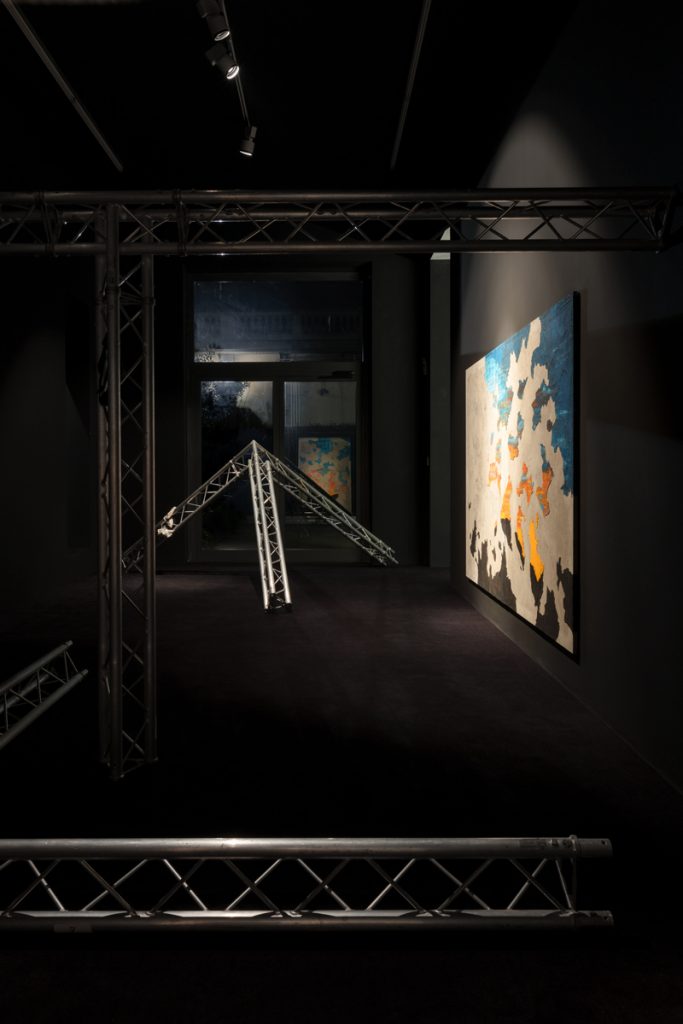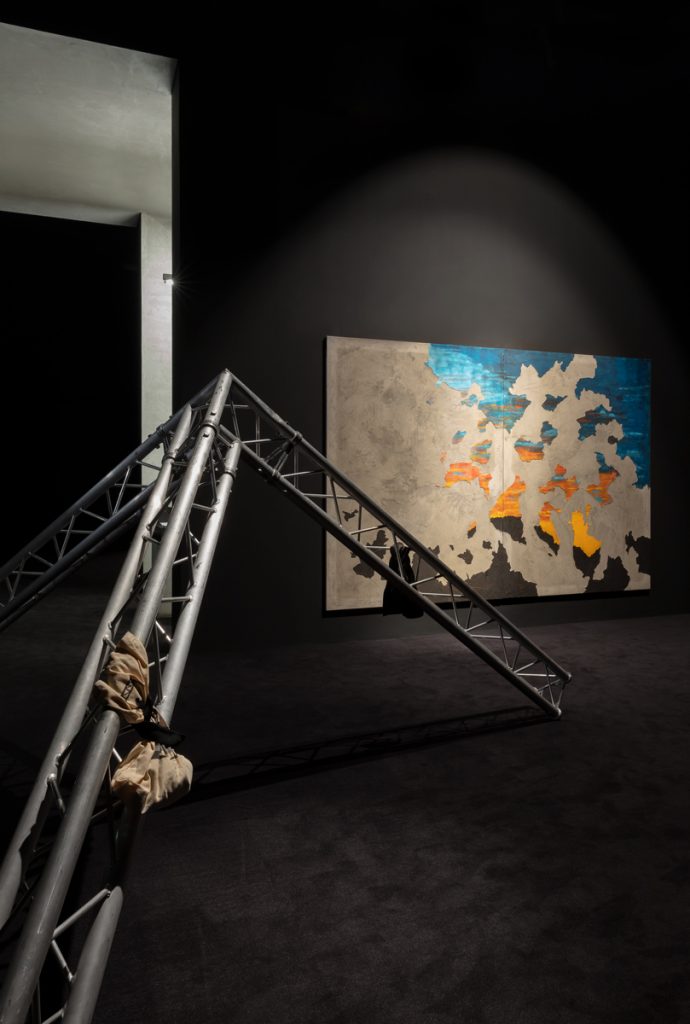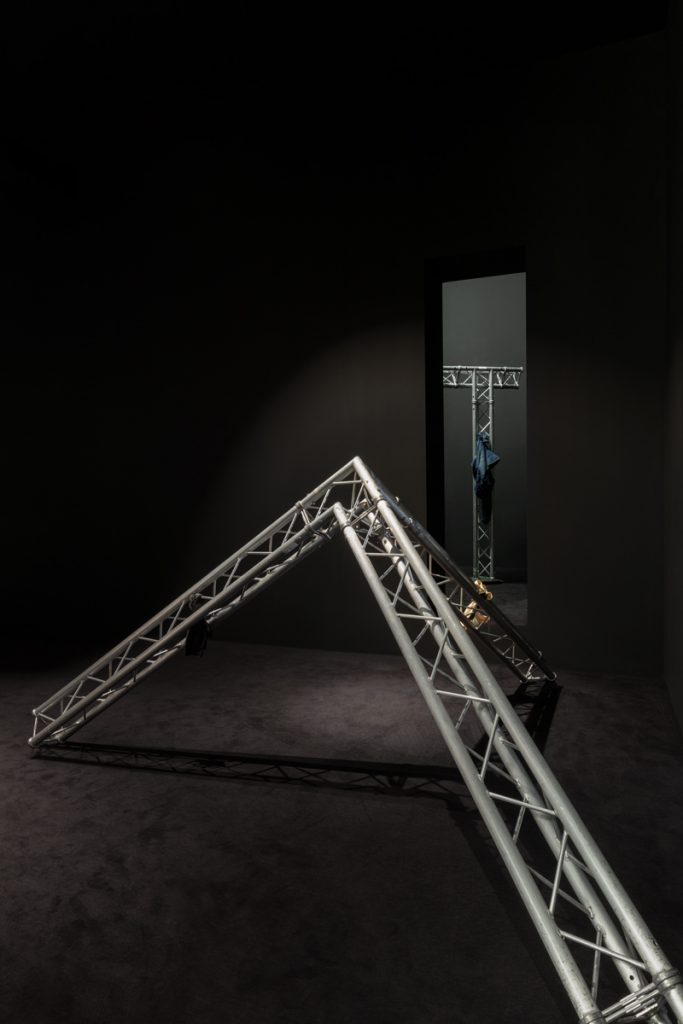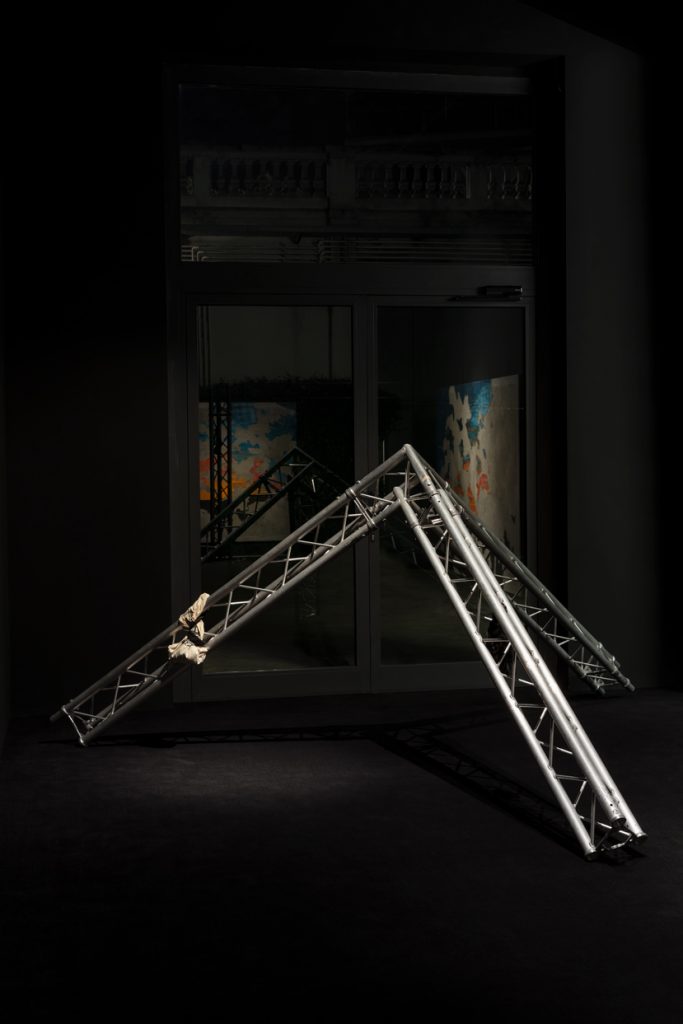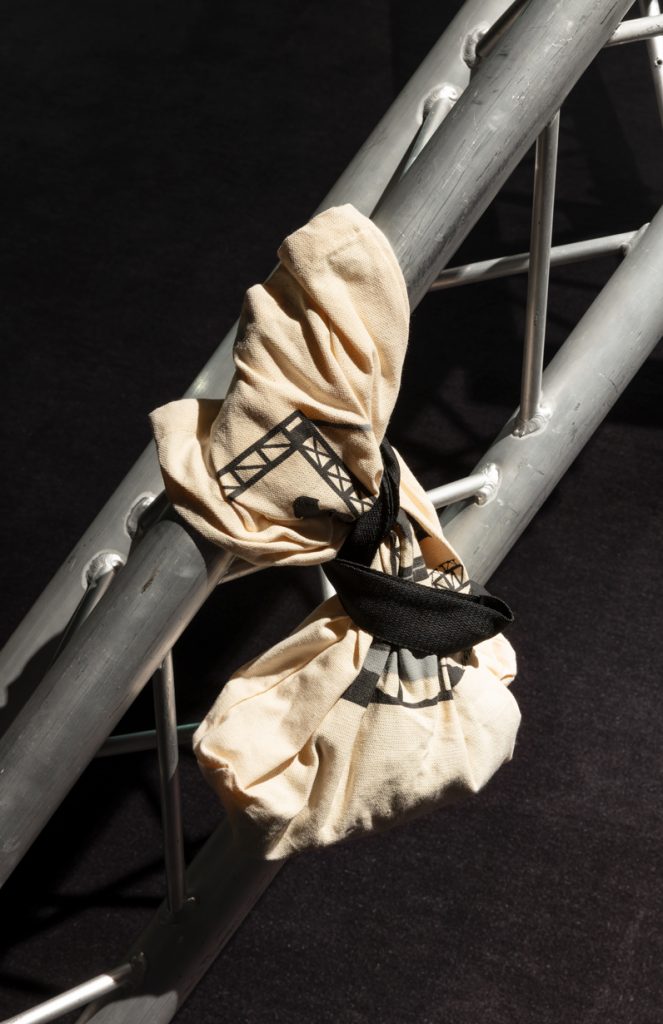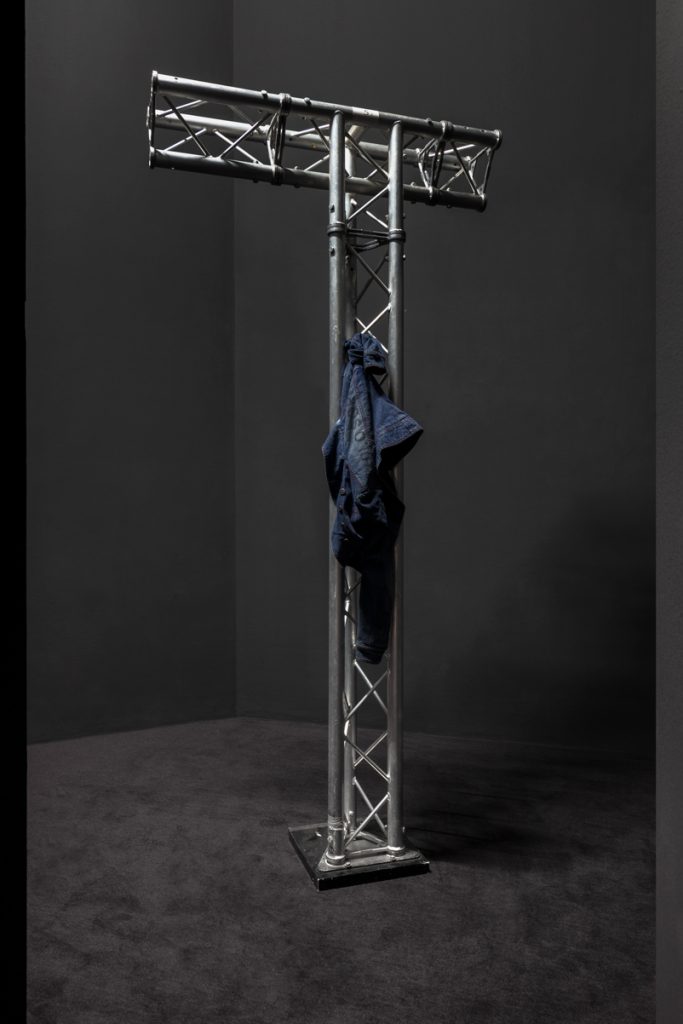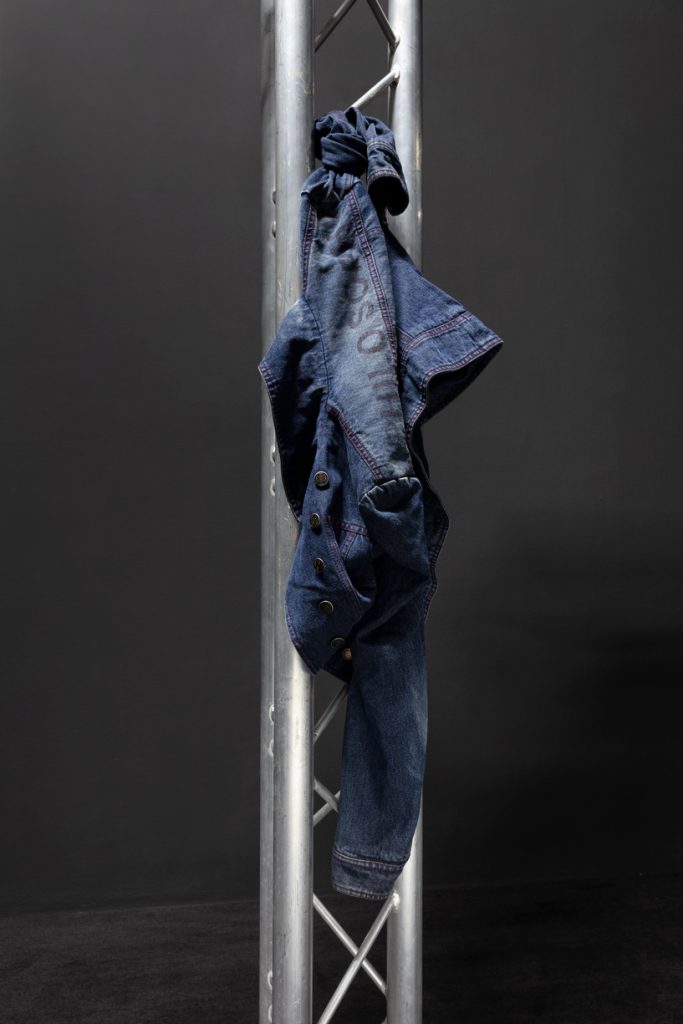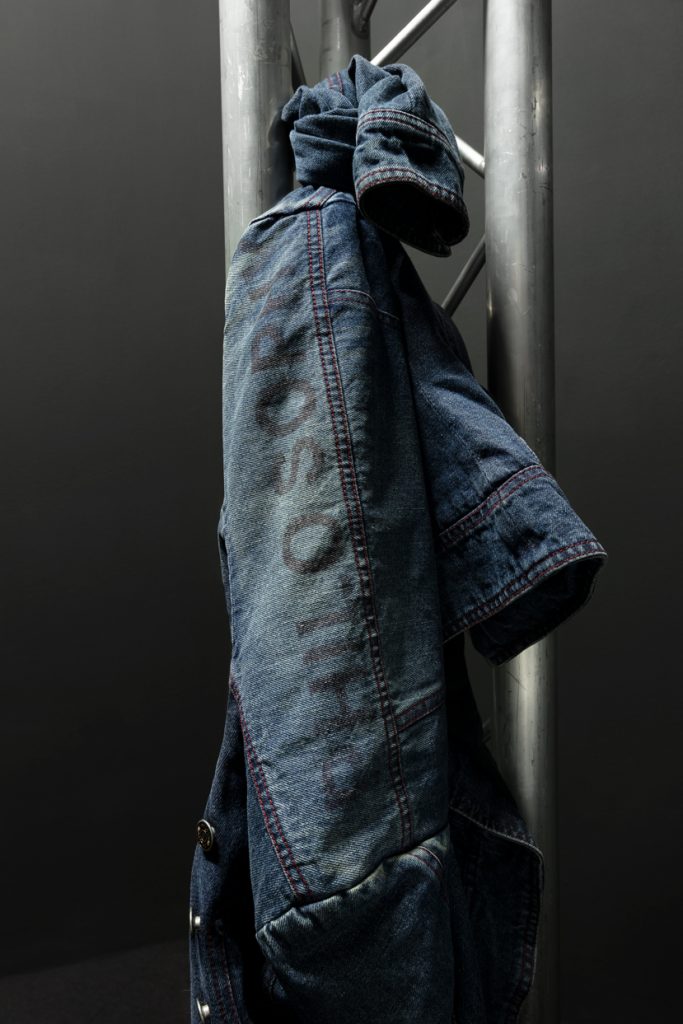
- This event has passed.
kaufmann repetto is pleased to announce The After, Latifa Echakhch’s fifth solo exhibition with the gallery.
Dominated by black perimeter walls and a black carpet covering the floor, the entire exhibition space is transformed into a concert stage. Lighting trusses—usually perceived as merely technical elements of stage design—assume a central function in this installation. Assembled into doors, bridges and totemic objects, they invite the visitor to walk into a forest of beams and apparatus. The severe geometry of the metallic sculptures is subverted by signs that indicate a process of deconstruction: some beams are abandoned on the floor, clothing and other objects appear to be thrown haphazardly on the trusses. These elements convey the idea that we are observing the remnants of an event that happened in our absence: a concert has taken place, the dismantling of the stage has already started, or maybe some musicians and fans stayed throughout the night enjoying the rite of a collective celebration.
An additional clue to complete the artist’s complex narrative is provided by the diptychs of the painting series, Sun Set Down. Glowing brightly from the black walls, the canvases depict a landscape steeped in the warm hues of a sunrise, confirming that we are not witnessing a nocturnal scene, but that a new day is near. While the reference for her previous Underneath paintings was the classic representation of the sky in Italian Renaissance fresco, the new series is closer to the viewing habits of the 20th century, influenced by the supersaturated aesthetics of technicolor film and the bright and brilliant color palette of mainstream landscape photography. A radiant sunrise of a mountain landscape is captured in vivid hues, ranging from dark blue to red, orange and gold, while the lower part of the scene is dominated by the dark silhouette of the surrounding peaks. However only fragments of the painted image remain intact, while large portions of the scene appear to be missing, scratched with vigorous gestures, unveiling a rough layer of concrete previously applied on the canvas. The process of deconstruction collides sharply with the apparently romantic subject matter, entailing a displacement of the viewer’s gaze.
The exhibition’s title, The After, reveals ambivalent temporal layers: “l’after” is the French slang term that indicates the after-party usually following an event, a concert, or a rave, which often lasts until the following morning. At the same time, the after on a literal level implies a temporal rupture or sharp division that separates two eras.
Individual or collective memories, stirred up by the installation, remind us of the fulfilling experience of attending concerts and festive events, which in the present times seems like a distant mirage. Nonetheless, it is the occurence of a destructive moment which allows to conceive a reconstruction, and an ending that can correspond to a new beginning.
kaufmann repetto è lieta di presentare The After, la quinta mostra personale di Latifa Echakhch con la galleria.
Dominato dal nero di pareti e pavimento, lo spazio espositivo è trasformato nel palcoscenico di un concerto. Aggregati di impalcature per le luci, di solito percepite come semplici componenti tecniche della scenografia, assumono una funzione centrale negli spazi. Assemblate in aperture, ponti e oggetti totemici, invitano lo spettatore a entrare in una foresta formata da travi. La severa geometria delle sculture metalliche è sovvertita da segni che indicano un processo di decostruzione: alcuni moduli sono abbandonati sul pavimento, vestiti e altri oggetti sono gettati in maniera disordinata su altre travi. Queste tracce suggeriscono che stiamo osservando ciò che resta di un evento accaduto in nostra assenza: c’è stato un concerto, è già iniziato lo smantellamento del palco, forse alcuni musicisti e fan sono rimasti lì tutta la notte a consumare il rito di una celebrazione collettiva.
Ad arricchire la complessa narrativa dell’artista, un ulteriore indizio è dato dai dittici della serie di dipinti Sun Set Down. Rese ancora più luminose dall’ambiente scuro, le tele raffigurano un paesaggio immerso nelle calde tonalità dell’alba, a dare conferma che non stiamo assistendo a una scena notturna, ma che si sta piuttosto avvicinando un nuovo giorno. Mentre i dipinti della ciclo precedente, Underneath, facevano riferimento alla rappresentazione classica del cielo negli affreschi rinascimentali, questa nuova serie si accosta di più alle consuetudini visive del ventesimo secolo, plasmate dall’estetica supersatura dei film in technicolor e dalla brillante palette cromatica della fotografia paesaggistica mainstream. Un’alba splendente in un paesaggio montano viene catturata in tonalità vivide, dal blu scuro al rosso, all’arancio e all’oro, mentre nella parte inferiore del quadro domina la sagoma scura delle vette circostanti. Ma solo frammenti dell’immagine sono intatti, mentre ampie porzioni della scena mancano, grattate via con gesti vigorosi, svelando un grezzo strato di cemento precedentemente applicato sulla tela. Il processo di decostruzione si scontra bruscamente con il soggetto apparentemente romantico, provocando un disorientamento nello sguardo dello spettatore.
Il titolo della mostra, The After, rivela strati temporali ambivalenti: “l’after” è il termine gergale francese che indica l’after-party che di solito segue un evento, un concerto, un rave, e che spesso dura fino al mattino successivo. Nel contempo, ‘il dopo’ implica letteralmente una rottura temporale o una divisione netta che separa due epoche. I ricordi individuali o collettivi innescati dall’installazione ci riportano all’appagamento dato da un’esperienza collettiva, condivisa, che, nel momento storico attuale, appare come una chimera. Allo stesso tempo, come solamente dopo un atto distruttivo si può pensare di ricostruire, così a una fine può seguire e corrispondere un nuovo inizio.

